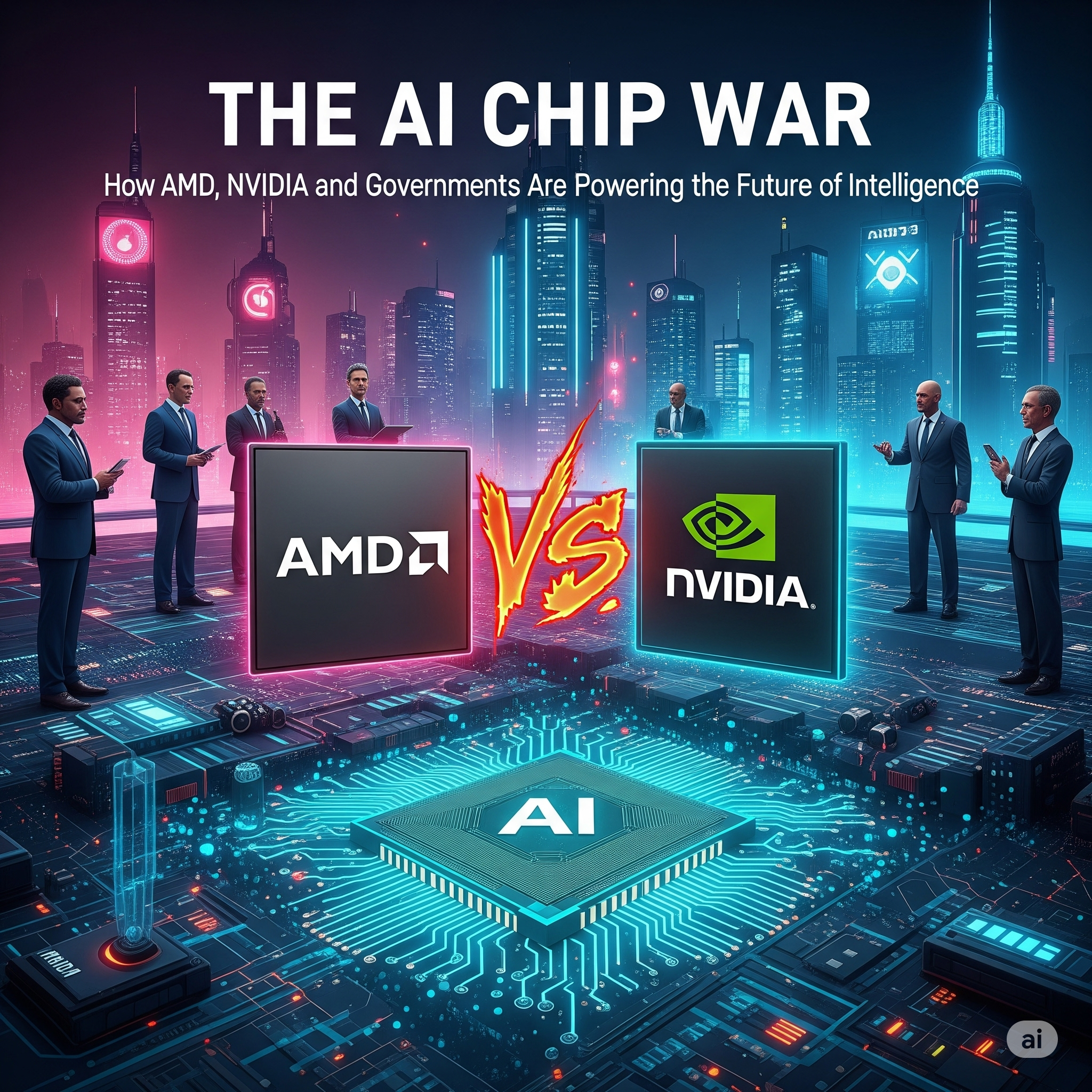As artificial intelligence rapidly evolves, a new battlefield has emerged not in code but in hardware. The AI chip war is heating up with tech giants like AMD and NVIDIA racing to dominate the silicon that fuels cutting-edge AI systems. Meanwhile, governments are stepping in, pushing for sovereign AI infrastructure to secure their data and reduce reliance on foreign technology.
In this article, we’ll explore the current landscape of the AI chip industry, recent strategic moves by AMD and OpenAI and the growing global emphasis on AI sovereignty.

Table of Contents
Why AI Chips Matter More Than Ever
The rise of generative AI and large language models (LLMs) like GPT, Claude and Gemini has made high-performance chips the backbone of innovation. These chips must handle massive amounts of data and perform billions of calculations per second.
Key factors driving demand:
- Model size explosion (e.g., GPT-4 has over 1 trillion parameters)
- Training costs dropping, but still reliant on high-end GPUs/TPUs
- Global hunger for faster, cheaper, energy-efficient inference
AMD Enters the Spotlight with MI350 & MI400
AMD recently unveiled the Instinct MI350 accelerator and teased the upcoming MI400 series, positioning itself as a serious rival to NVIDIA’s dominant H100 and B200 chips. Slated for rollout in 2026, these chips are designed to power everything from model training to real-time inference.
A big headline: OpenAI is reportedly partnering with AMD to build a new server platform called Helios, marking a strategic shift from NVIDIA’s near monopoly.
Key specs & highlights:
- MI350 delivers 35× AI inference performance over its predecessor.
- AMD’s ROCm software stack is being aggressively improved for AI workloads.
- Collaboration with major cloud providers (Microsoft, Meta, OpenAI).
NVIDIA’s “Sovereign AI” Strategy
While AMD is gaining momentum, NVIDIA still dominates over 80% of the AI chip market. But CEO Jensen Huang is thinking beyond the data center. His new pitch: “Sovereign AI.”
The idea? Empower nations to build their own AI systems using local data and infrastructure, powered by NVIDIA hardware.
Recent sovereign AI partnerships:
- France, Japan, India and the UAE are investing in NVIDIA-backed infrastructure.
- Focus is on national security, language localization and economic independence.
Governments and AI Sovereignty: A New Tech Race
It’s no longer just Big Tech in the AI race. Countries are increasingly recognizing AI as critical infrastructure similar to oil or electricity.
Notable moves:
- EU pledges €200B in AI development, prioritizing open-source and ethical AI.
- UK’s AI Safety Summit called for international collaboration on frontier models.
- India’s BharatGPT and UAE’s Falcon models are localizing LLMs for regional needs.
Why it matters:
- Reduces reliance on U.S. cloud providers
- Encourages data localization
- Opens doors for innovation in local languages and domains
Challenges Ahead: Energy, Ethics and Ecosystem
While hardware innovation is racing ahead, new challenges loom:
- Energy demands of data centers are pushing nations to adopt nuclear and green power.
- Ethical concerns around facial recognition, surveillance and AI in warfare.
- Talent wars are intensifying as governments and companies compete for top AI researchers.
Conclusion
The AI chip war is more than a tech trend, it’s a geopolitical and economic shift reshaping the future of computing. With AMD challenging NVIDIA, OpenAI building new systems and governments entering the fray, the next few years will define who controls the next era of intelligence.
If data is the new oil, then AI chips are the new pipelines and the scramble to control them has only just begun.

